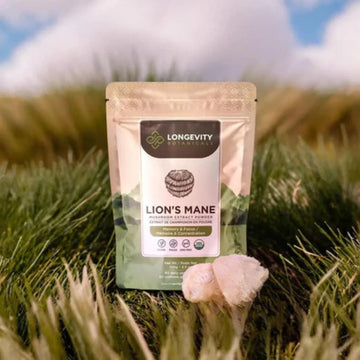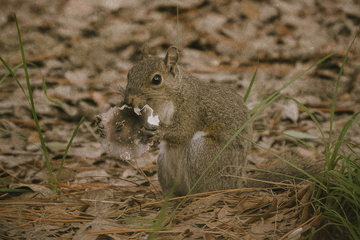For centuries, people have debated where mushrooms belong in the great family tree of life. To the casual eye, they might seem like unusual plants, springing up from soil and logs, silent and rooted in place. Yet modern science has revealed a surprising truth. At the genetic level, fungi, including mushrooms, are far more closely related to animals than to plants. This discovery reshapes not only our understanding of evolution but also the way we see mushrooms as food, medicine, and partners in life on Earth.
The Genomic Breakthrough
Key insight: Genome sequencing has provided definitive proof that fungi share a more recent common ancestor with animals than with plants. In the 1990s, molecular biologists began analyzing ribosomal RNA and protein-coding genes from different kingdoms of life. These studies showed fungi cluster alongside animals, not plants. With the publication of full fungal genomes, such as that of Saccharomyces cerevisiae (baker’s yeast), the evidence became overwhelming. Shared genetic sequences and conserved biochemical pathways firmly place fungi in a supergroup called Opisthokonta, which includes both fungi and animals.
This revelation was not only a taxonomic correction but also a philosophical shift. The kingdom Fungi, once treated as an offshoot of plants, is now recognized as a separate and deeply intertwined branch with animals. In other words, you are genetically closer to a shiitake mushroom than that mushroom is to the grass beneath it.
Shared Biochemistry Between Animals and Fungi
Cell walls and energy: Unlike plants, which use cellulose to build their cell walls, fungi rely on chitin, the same tough material found in the exoskeletons of insects and crustaceans. This structural similarity underscores their kinship with the animal world.
Digestive strategies: Plants create their own food through photosynthesis, capturing sunlight and carbon dioxide. Animals and fungi, on the other hand, must consume organic matter. While animals ingest food internally, fungi secrete enzymes into their environment and absorb nutrients externally. The principle is the same: both are heterotrophs dependent on other life for sustenance.
Sterols and proteins: Fungi produce ergosterol, a compound functionally similar to cholesterol in animals. Both play crucial roles in maintaining cell membrane fluidity. Many metabolic enzymes, protein pathways, and signaling molecules also overlap between fungi and animals, reflecting deep evolutionary ties.
The Evolutionary Story
From a shared ancestor: Scientists estimate that animals and fungi split from a common ancestor roughly one billion years ago. This ancient organism likely lived in aquatic environments, flagellated and free-swimming. Over time, one branch evolved into the diverse fungi we see today, while another gave rise to the vast array of animals.
Convergent and divergent traits: Despite this shared origin, fungi and animals adapted to very different lifestyles. Animals developed mobility, nervous systems, and complex organs, while fungi specialized in breaking down organic matter and forming symbiotic relationships. Yet, when researchers look under the surface, the shared genomic fingerprints are unmistakable.
Why It Matters for Human Health
Medicinal mushrooms: Understanding fungi as close relatives helps explain why their compounds interact so effectively with human biology. Beta-D glucans, triterpenes, and ergosterol derivatives in mushrooms act on immune pathways and cellular defenses in ways that align closely with our own systems. For example, Turkey Tail polysaccharopeptides stimulate gut bacteria and immune cells in patterns familiar to mammalian physiology.
Pharmaceutical parallels: Many life-saving drugs are derived from fungi. Penicillin, statins, and immunosuppressants like cyclosporine all emerged from fungal research. These compounds work in humans because the underlying molecular targets are similar between fungi and animals. Shared ancestry means shared vulnerabilities and shared opportunities for healing.
Nutrition and bioavailability: Unlike plants, fungi provide compounds our bodies can more readily absorb. For instance, their chitin cell walls must be broken down to release bioactive compounds, a process improved through techniques like fruiting body extraction and bio-enhanced water extraction. These methods unlock nutrients that act synergistically with human cells due to our genetic kinship.
Changing How We See Fungi
From food to allies: Knowing that mushrooms share evolutionary roots with us adds weight to their role in wellness. Reishi, Lion’s Mane, Chaga, and others are not just plants with unusual properties. They are distant cousins with whom we share molecular heritage, making their benefits more intuitive.
Environmental partners: Fungi also play roles essential to the biosphere, breaking down complex organic matter and recycling nutrients. Their ability to form symbiotic networks with plants through mycorrhizae highlights their unique bridging role between kingdoms. This ecological importance is magnified by their genetic closeness to animals, reinforcing how life forms are interdependent.
Broader Implications of the Discovery
Evolutionary education: The placement of fungi alongside animals challenges old school biology lessons and reshapes how we teach the story of life. It shows students that life is not just plants versus animals, but a tapestry of kingdoms with surprising connections.
Biotechnology innovation: Fungi’s closeness to animals makes them invaluable test systems for medical research. Yeasts, for instance, are model organisms for genetics, cancer biology, and drug development. They mimic human cellular pathways more faithfully than plants, making discoveries more transferable to medicine.
Philosophical perspective: For many, this discovery is humbling. It reminds us that humans are not isolated rulers of nature but participants in a vast web of shared ancestry. Fungi, once overlooked, become companions in the evolutionary story, offering both scientific insights and practical benefits.
Conclusion: The Kinship We Cannot Ignore
Genomic research has rewritten fungi’s place in the story of life, revealing that mushrooms sit closer to animals than plants. Their shared molecular makeup explains their medicinal power, their role in drug discovery, and their ecological importance. By recognizing mushrooms as distant relatives, we not only deepen our respect for them but also expand our view of what it means to be alive.
Next time you enjoy a mushroom risotto or sip a Reishi tea, remember: you are not just consuming a plant-like food. You are sharing a meal with an ancient cousin, connected by a billion years of evolutionary history.

















